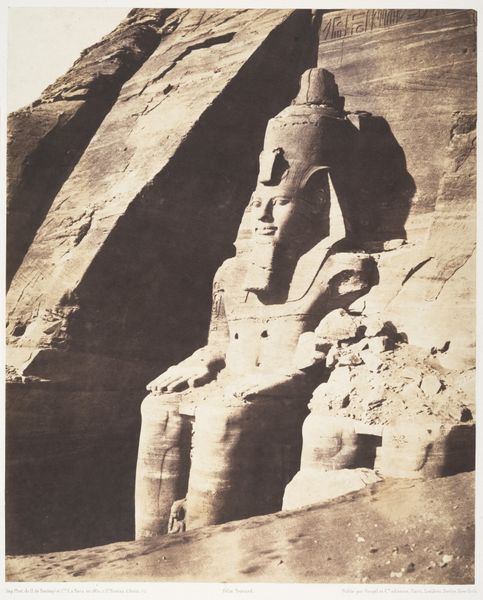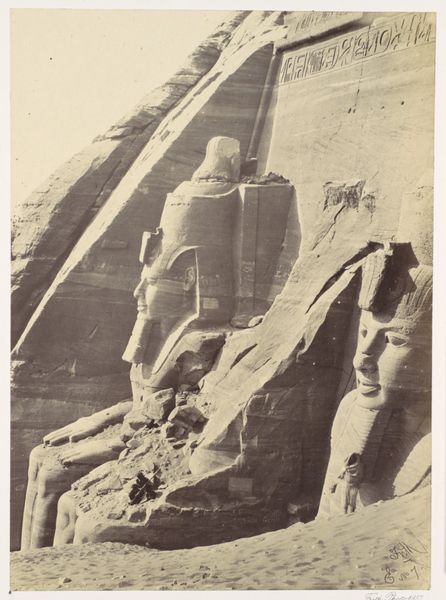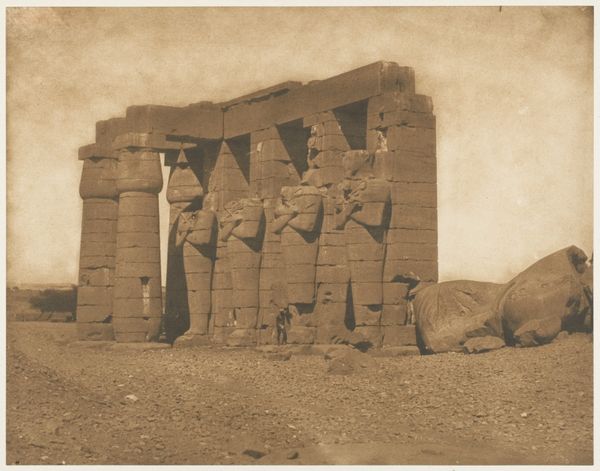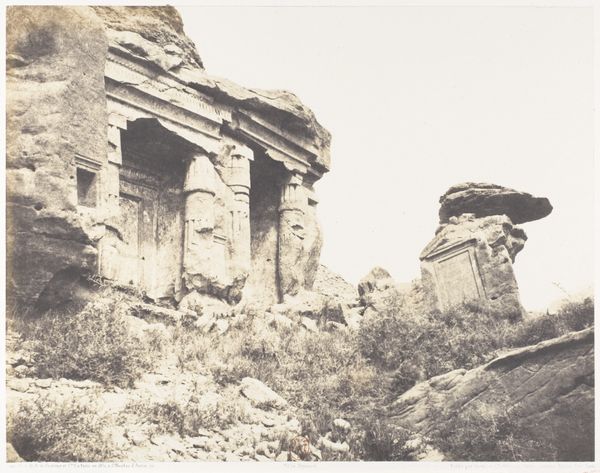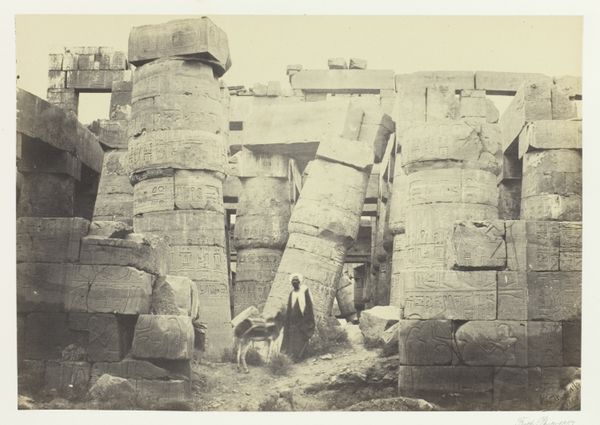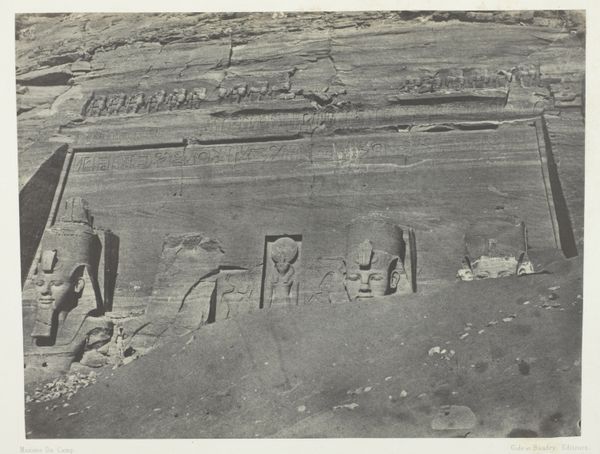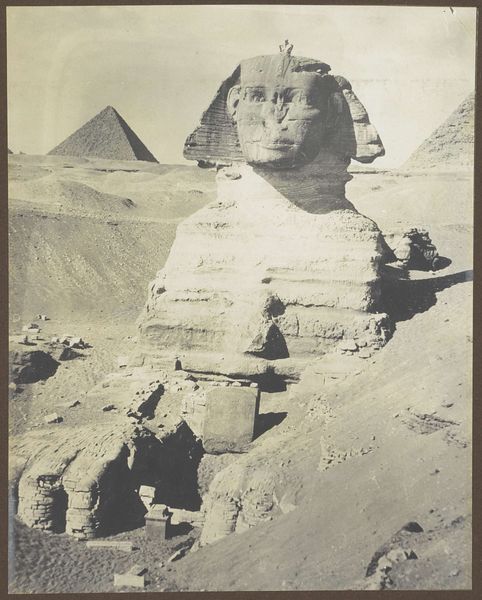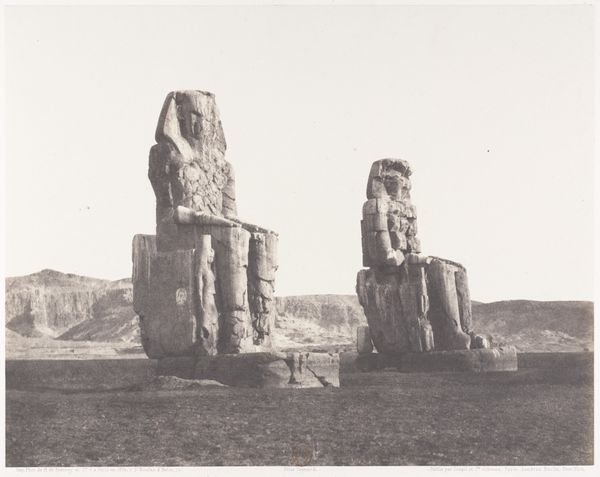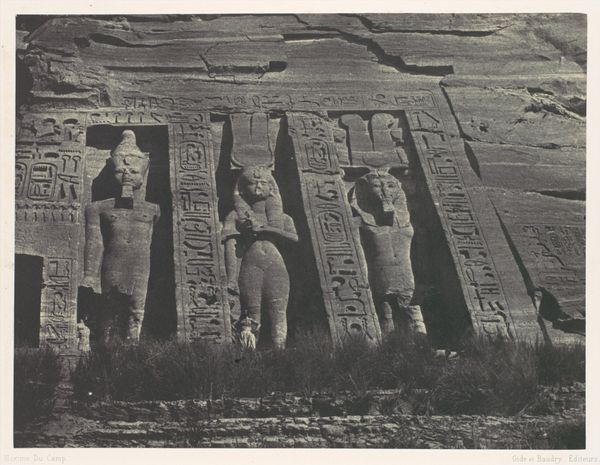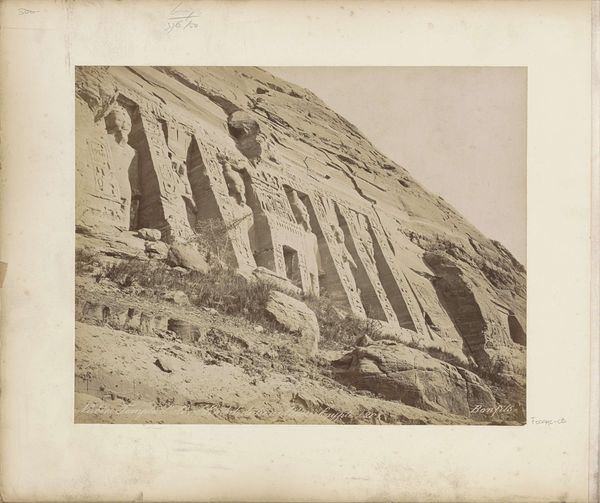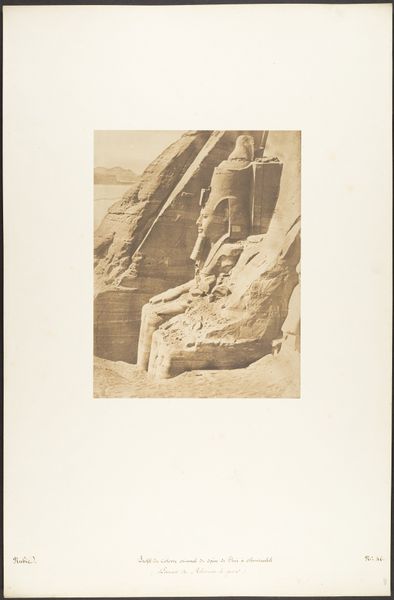
Abo-Sembil, Grand Spéos, Statues Colossales vues de Face (Parte Inférieure) 1851 - 1852
0:00
0:00
print, photography, sculpture, architecture
# print
#
landscape
#
ancient-egyptian-art
#
outdoor photography
#
photography
#
ancient-mediterranean
#
sculpture
#
arch
#
architecture
Dimensions: Image: 24.3 x 30.8 cm (9 9/16 x 12 1/8 in.) Mount: 37.9 x 50.1 cm (14 15/16 x 19 3/4 in.)
Copyright: Public Domain
Curator: This compelling photograph by Félix Teynard, taken between 1851 and 1852, depicts the colossal statues at Abu Simbel. Titled "Abo-Sembil, Grand Spéos, Statues Colossales vues de Face (Partie Inférieure)," it offers a striking view of the lower portion of these imposing figures. Editor: My first impression is one of monumental scale and profound stillness. The sepia tones give the stone an almost palpable weight, and there's an eerie, almost dreamlike quality about the scene. Curator: Indeed. The image captures not only the physical grandeur of the statues, hewn from the rock face itself, but also hints at the complexities of power and representation within ancient Egyptian society. These are, after all, depictions of pharaoh Ramses II, a ruler keen to project his image across time and space. Editor: The crumbling details and the sand creeping up remind us that even the most ambitious displays of power are subject to time's relentless march. Those partial figures convey a story of vanished majesty and a civilization whose beliefs shaped the very landscape. Do you see how even this perspective echoes conventional images and compositions? Curator: Absolutely. Teynard's lens invites questions around colonialism and representation, whose gaze captured, mediated, and brought back these "discoveries" for European audiences? Whose stories get told, and from what angle? This particular view frames Ramses as partially consumed by the earth, literally grounding his power. Editor: Symbolically rich indeed! Look at the feet, which root those figures to the earth. Notice also the subtle expressions rendered by sculptors. We feel both authority and also something distinctly mortal in those weathered features. The images invite a silent dialogue between civilizations, between power and impermanence. Curator: It challenges us to consider the sociopolitical ramifications and underlying intentions of preservation, and how art contributes to the formation of cultural identity over the course of generations. A picture worth a thousand deconstructions. Editor: A layered journey that bridges the visible and invisible. Teynard offers us a compelling portal through which to consider the passage of empires.
Comments
No comments
Be the first to comment and join the conversation on the ultimate creative platform.
